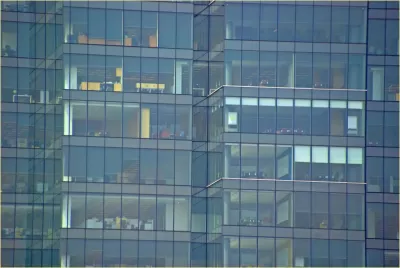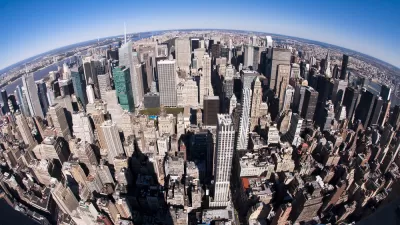Features like blank street facades literally turn us off, decreasing mental stimulation and bringing on restlessness and stress. Research points to worrying consequences for people who find their city, well, boring.

Colin Ellard, an environmental psychologist and neuroscientist, connects the bland facade of a Whole Foods store to study participants' lackluster mood. "These people were bored and unhappy. When asked to describe the site, words such as bland, monotonous and passionless rose to the top of the charts."
When asked about their experience roaming a more interesting locale, "the words that sprang to their minds were mixed, lively, busy, socialising and eating. Even though this site was so crowded with pedestrians that our participants struggled to find a quiet place to reflect on our questions, there was no doubt that this location was to their liking on many levels."
Ellard discusses why we prefer stimulating places, streets full of people and activity. It can even be argued that staid environments contradict our intelligence as a species. "At a psychological level, these constructions fail us because we are biologically disposed to favour locations defined by complexity, interest, and the passing of messages of one kind or another."
Maybe we accept un-ornamented, utilitarian spaces because we expend so much attention on the digital world. "But unless our electronic connections can supplant our physical surroundings, the widespread adoption of global, functional designs will have [negative] psychological consequences of the kind described here."
FULL STORY: Streets with no game

Study: Maui’s Plan to Convert Vacation Rentals to Long-Term Housing Could Cause Nearly $1 Billion Economic Loss
The plan would reduce visitor accommodation by 25,% resulting in 1,900 jobs lost.

North Texas Transit Leaders Tout Benefits of TOD for Growing Region
At a summit focused on transit-oriented development, policymakers discussed how North Texas’ expanded light rail system can serve as a tool for economic growth.

Why Should We Subsidize Public Transportation?
Many public transit agencies face financial stress due to rising costs, declining fare revenue, and declining subsidies. Transit advocates must provide a strong business case for increasing public transit funding.

How to Make US Trains Faster
Changes to boarding platforms and a switch to electric trains could improve U.S. passenger rail service without the added cost of high-speed rail.

Columbia’s Revitalized ‘Loop’ Is a Hub for Local Entrepreneurs
A focus on small businesses is helping a commercial corridor in Columbia, Missouri thrive.

Invasive Insect Threatens Minnesota’s Ash Forests
The Emerald Ash Borer is a rapidly spreading invasive pest threatening Minnesota’s ash trees, and homeowners are encouraged to plant diverse replacement species, avoid moving ash firewood, and monitor for signs of infestation.
Urban Design for Planners 1: Software Tools
This six-course series explores essential urban design concepts using open source software and equips planners with the tools they need to participate fully in the urban design process.
Planning for Universal Design
Learn the tools for implementing Universal Design in planning regulations.
City of Santa Clarita
Ascent Environmental
Institute for Housing and Urban Development Studies (IHS)
City of Grandview
Harvard GSD Executive Education
Toledo-Lucas County Plan Commissions
Salt Lake City
NYU Wagner Graduate School of Public Service





























